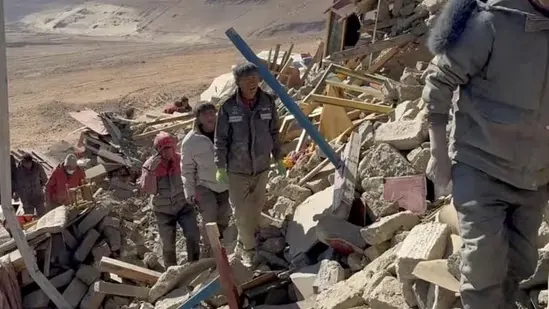
The epicentre of a magnitude 5.5 earthquake that rocked sections of the Chinese province of Qinghai on Wednesday is close to the Yellow River’s source, which is the primary natural waterway that supplies northern China.(AFP)
wp-social domain was triggered too early. This is usually an indicator for some code in the plugin or theme running too early. Translations should be loaded at the init action or later. Please see Debugging in WordPress for more information. (This message was added in version 6.7.0.) in /home/daillzpw/public_html/nagalandheadlines.org/wp-includes/functions.php on line 6121vinkmag domain was triggered too early. This is usually an indicator for some code in the plugin or theme running too early. Translations should be loaded at the init action or later. Please see Debugging in WordPress for more information. (This message was added in version 6.7.0.) in /home/daillzpw/public_html/nagalandheadlines.org/wp-includes/functions.php on line 6121
The epicentre of a magnitude 5.5 earthquake that rocked sections of the Chinese province of Qinghai on Wednesday is close to the Yellow River’s source, which is the primary natural waterway that supplies northern China.(AFP)
A magnitude 5.5 earthquake shook parts of the Chinese province of Qinghai on Wednesday, with its epicentre located near the source of the Yellow River, the main natural waterway serving northern China.
The vast Qinghai-Tibetan plateau has been jolted by seismic activity since Tuesday, including a deadly 6.8-magnitude quake in the foothills of the Himalayas in Tibet and a smaller 3.1-magnitude quake in Sichuan.
The epicentre of the Qinghai quake, which struck at 3:44 p.m. (0844 GMT), was located in Madoi county in the Golog prefecture at a depth of 14 km (8.7 miles), according to the China Earthquake Networks Center (CENC).
Also read: Magnitude 6.1 earthquake strikes El Salvador, no risk of tsunami
It was about 200 km west of the county seat of Madoi, a town populated mainly by Tibetans, including former nomadic herders and their families who have resettled in government-built homes over the years.
Also read: Tibet earthquake: 126 dead; rescue workers search for survivors
Earthquakes are common along the edges of the seismically active Qinghai-Tibetan plateau, including Madoi.
A total of 102 quakes of magnitude 3 or higher have been logged within 200 km of Wednesday’s quake over the past five years, according to CENC, with the largest reaching a magnitude of 7.4 in 2021.
The epicentre of Qinghai quake on Wednesday is about 1,000 km northeast of the quake in Tibet a day earlier.